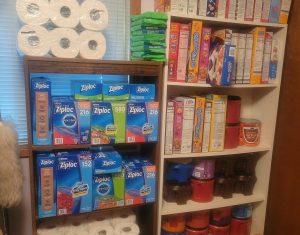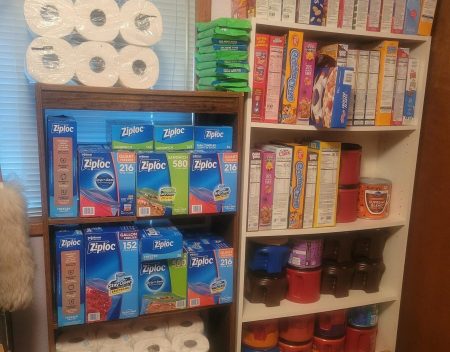Entrepreneur
When we first set out to launch a telehealth startup, my brother Eli and I were hit with obstacle after obstacle, each one more confusing and contradictory than the last. It felt like the system was designed to keep outsiders out. And for a while, we believed what so many others do: that breaking into telehealth required deep pockets, advanced degrees and a law firm on speed dial.
But here’s the truth most people don’t know: the biggest barriers to entry aren’t real barriers at all, they’re myths. Myths that circulate so persistently, they end up scaring off exactly the kind of innovative thinkers this industry desperately needs.
Telehealth is projected to hit over $200 billion in global market size. Yet countless entrepreneurs, especially those outside of medicine, assume the space is off-limits. It’s not. You just need to know how to separate fact from fiction.
Here are the most common myths holding founders back, and how to move past them.
Myth #1: You need a medical degree to start a telehealth company
The Truth: You don’t need to wear a white coat to build a successful healthcare brand. Just like Jeff Bezos didn’t need to sew every book jacket Amazon sold personally, telehealth founders don’t need to treat patients themselves.
What You Actually Need: Infrastructure. A compliant, scalable system that connects licensed providers with patients and keeps everything above board.
How to Overcome It: Partner with licensed medical professionals and/or use platforms that manage provider relationships, prescription workflows and regulatory compliance. Some platforms (like Bask Health) now offer white-labeled solutions that allow non-medical founders to launch brands without having to hire an in-house clinical team.
Related: This Founder Didn’t Want to Be the ‘Face’ of Her Brand. But She Pushed Through the Discomfort — and Now She’s a Household Name.
Myth #2: The regulatory maze is too complicated to navigate
The Truth: Yes, healthcare is regulated. But “regulated” doesn’t mean “impossible.” It just means there are rules. And most of them are well-defined, transparent and navigable with the right tools.
Where Entrepreneurs Go Wrong: Trying to reinvent the regulatory wheel alone, or giving up before even trying.
How to Overcome It: Use turnkey compliance services. Many platforms now handle everything from HIPAA compliance to provider credentialing to pharmacy fulfillment. Some even offer integrations with familiar e-commerce platforms like Shopify. The path has been paved; you don’t need to build the road from scratch.
Myth #3: It takes years to launch a telehealth business
The Truth: That might have been true in 2010. Today, startups can go live in weeks, not years.
Why? The rise of no-code software, pre-licensed provider networks and plug-and-play health tech platforms. The time and financial cost of building from the ground up is no longer necessary or strategic.
How to Overcome It: Instead of coding a platform or recruiting providers one by one, opt for modular, pre-built systems that handle intake, virtual visits, e-prescriptions and more. Many founders now go from idea to launch in under 30 days.
Related: E-Commerce Is Getting Tougher — Is Telehealth the Answer?
Myth #4: You need massive capital to get started
The Truth: It used to cost hundreds of thousands to stand up a telehealth brand, custom software, legal retainers, provider salaries, insurance…the list went on.
Today, that’s changed.
What’s Different Now: SaaS-based telehealth platforms offer everything from patient portals to multi-state provider networks to legal frameworks, all on a subscription basis.
How to Overcome It: Treat your launch like a modern DTC brand. Skip the six-figure dev spend and plug into tools that charge monthly fees. In the same way Shopify enabled a new generation of retail brands, telehealth platforms now let you launch with low overhead and scale as you grow.
Myth #5: Telehealth is only for big healthcare providers
The Truth: The telehealth boom has democratized access. In fact, many of the most successful new players aren’t hospital systems; they’re small, focused consumer brands in niches like mental health, dermatology, women’s health and sexual wellness.
What They Have in Common: A clear audience, a compelling brand and a digital-first approach.
How to Overcome It: Focus on a specific problem underserved by traditional care, whether that’s managing migraines, tackling hair loss, or providing menopause support. Then use digital marketing strategies (SEO, influencer partnerships, paid ads) to build an audience. Compliance and infrastructure can be handled by your tech stack, your job is to own the brand and customer relationship.
Related: Cut Through Digital Noise With These 4 Kinds of Creative Content
Myth #6: You’ll get sued if you get it wrong
The Truth: Healthcare liability is real. But the fear of litigation often outweighs the actual risk, especially when you operate within a compliant framework.
The Key Difference: There’s a world of difference between ignoring regulations and using vetted, regulatory-compliant systems designed for telehealth delivery.
How to Overcome It: Work with vendors that prioritize compliance and have built-in protections, like encrypted data storage, secure video consultations and documented consent workflows. Think of it like driving a car with airbags, seatbelts and lane assist. You’re not invincible, but you’re far from reckless.
It’s not the rules holding you back — it’s the rumors
Most of what’s “common knowledge” about telehealth is outdated or outright wrong. The real story? Telehealth is one of the most wide-open opportunities in modern entrepreneurship.
It’s e-commerce in 2010. It’s SaaS in 2005. It’s still early, and the only thing stopping most founders from entering is misinformation.
There’s never been a better time to launch a telehealth brand. Whether you want to build a side hustle or the next billion-dollar exit, the playbook exists. The infrastructure is ready. The market is growing.
So if you’ve been sitting on an idea, or writing it off because you’re “not a doctor” or “don’t have millions”, it’s time to rethink that.
You don’t need an MD. You need a vision, a niche and the right platform to power your idea.
The $200 billion telehealth wave is already underway. The only question is whether you’ll be part of it—or watch it pass you by.
When we first set out to launch a telehealth startup, my brother Eli and I were hit with obstacle after obstacle, each one more confusing and contradictory than the last. It felt like the system was designed to keep outsiders out. And for a while, we believed what so many others do: that breaking into telehealth required deep pockets, advanced degrees and a law firm on speed dial.
But here’s the truth most people don’t know: the biggest barriers to entry aren’t real barriers at all, they’re myths. Myths that circulate so persistently, they end up scaring off exactly the kind of innovative thinkers this industry desperately needs.
Telehealth is projected to hit over $200 billion in global market size. Yet countless entrepreneurs, especially those outside of medicine, assume the space is off-limits. It’s not. You just need to know how to separate fact from fiction.
The rest of this article is locked.
Join Entrepreneur+ today for access.
Read the full article here









